|
Postcards from:
Big Bear Lake USA
San Jose Costa Rica
Granada Nicaragua
Managua Nicaragua
San Salvador ElSalvador
Tegucigalpa Honduras
San Pedro Sula Honduras
Copan Ruinas Honduras
La Ceiba Honduras
Utila Island Honduras
La Ceiba Honduras
San Pedro Sula Honduras
Belmopan Belize
Belize City Belize
Orange Walk Belize
Lamanai
Mayan Ruins
Panama City Panama
Bogata Colombia
Cali Colombia
Popayan Colombia
Ipiales Colombia
Quito Ecuador
Galapagos Is. Ecuador
Puerto Ayoro Galapagos
Guayaquil Ecuador
Cuenca Ecuador
Tumbes Peru
Lima Peru
Nazca Peru
Cuzco Peru
Ollantaytambo Peru
Machu Picchu Peru
Machu Picchu Photos
Cuzco Again
Lake Titicaca Peru
Lake Titicaca Photos
Copacabana Bolivia
La Paz Bolivia
Arica Chile
Iquique Chile
Antofagasta Chile
Santiago Chile 1
Valparaiso Chile
Santiago Chile 2
Easter Island Chile
Santiago Chile 3
Chillan Chile
Valdivia Chile
Puerto Montt Chile
Castro Chile
Chaiten Chile
Coyhaique Chile
Puerto Chacabuco Chile
Coyhaique Chile
Punta Arenas Chile
Puerto Natales Chile
Punta Arenas Chile
Puerto Williams Chile
Ushuaia Argentina
Buenos Aires Argentina
Puerto Iguazu Argentina
Montevideo Uruguay
Colonia Uraguay
Caracas Venezuela
Ciudad Bolivar Venezuela
Puerto Ordaz Venezuela
Porlamar Venezuela
PortOSpain Trinidad
Georgetown Guyana
Corriverton Guyana
Paramaribo Suriname
Cayenne French Guiana
Pointa A Pitre Guadaloupe
Gosier Guadeloupe
Dominican Republic
Miami Florida
Back Home in California
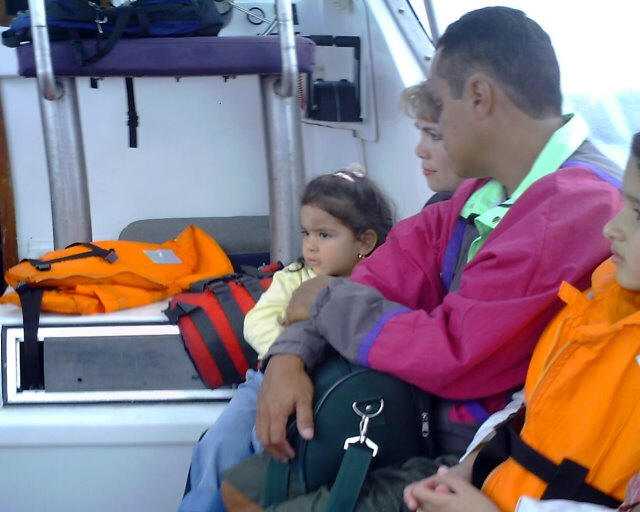
Puerto Ayora Galapagos: My shipmates on the
ill fated two hour race from San Crystobal to Puerto Ayora in a roller
coaster ride that made only two people sick... though everyone looked like
they were about to be sick!
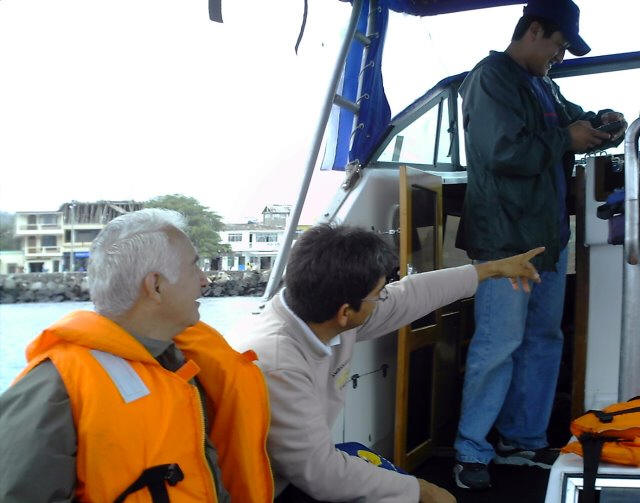
Puerto Ayora Galapagos: My shipmates on the ill fated two hour race from San
Crystobal to Puerto Ayora. Here we prepare to leave.

Puerto Ayora Galapagos: An interesting sculpture on arrival at the docks.
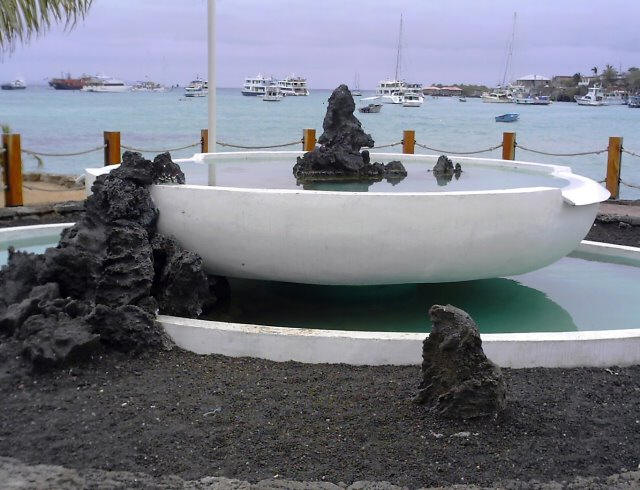
Puerto Ayora Galapagos: Fountain at the harbor.
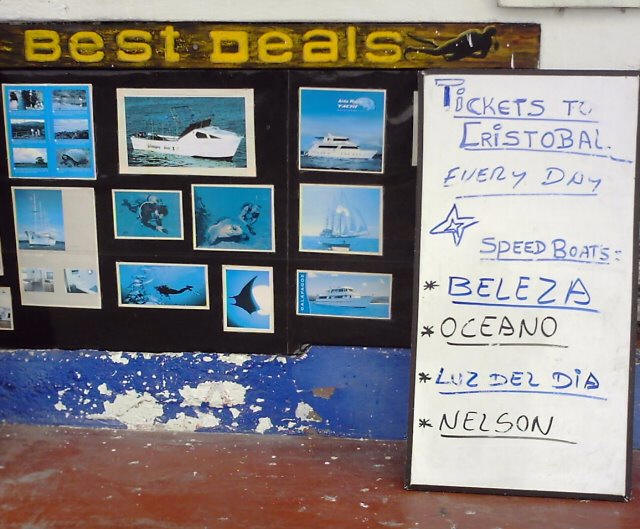
Puerto Ayora Galapagos: Sign advertising "fast boats" to San Crystobal
Island. I learned there is a big political controversy and accusations the
speed boat owners association has manipulated things to increase their
business.
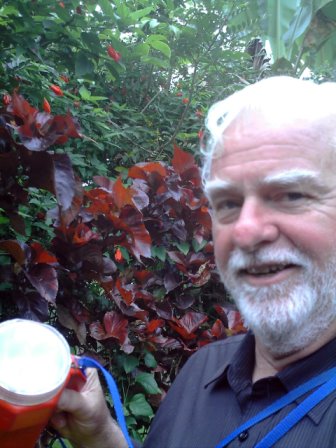
Puerto Ayora Galapagos:
With flashlight in hand I am ready to enter the dark 800
meter long lava tunnels in the highlands of Santa Cruz Island.

Puerto Ayora Galapagos: We approach the dark 800 meter long lava tunnels
through this green tunnel.

Puerto Ayora Galapagos: Stairs at the entrance to the dark 800 meter
long lava tunnels.
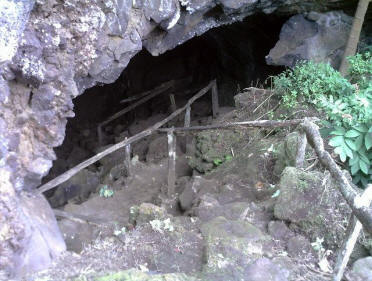
Puerto Ayora Galapagos: Stairs at the entrance to the dark 800 meter
long lava tunnels.
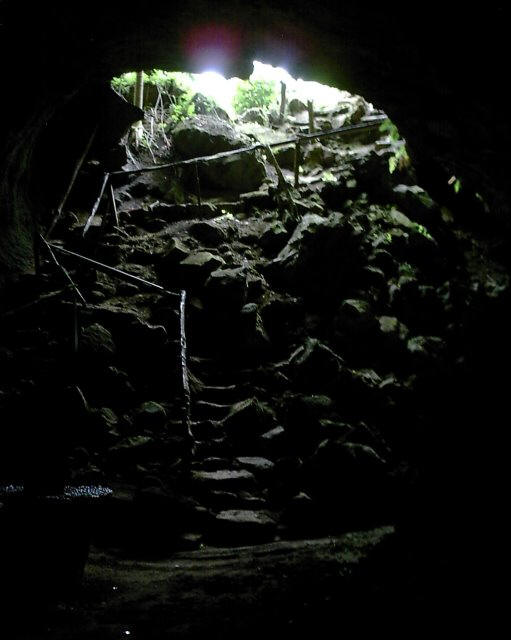
Puerto Ayora Galapagos: I got this far into the dark 800 meter long lava
tunnels and decided I'd seen enough. I've seen dark before.
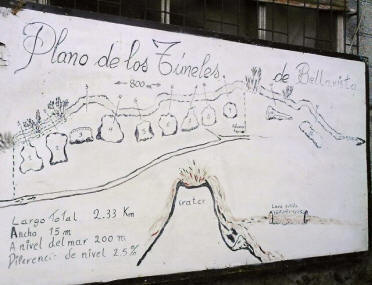
Puerto Ayora Galapagos: Sign explaining the dark 800 meter long lava
tunnels.

Puerto Ayora Galapagos: Sign explaining the dark 800 meter long lava
tunnels.
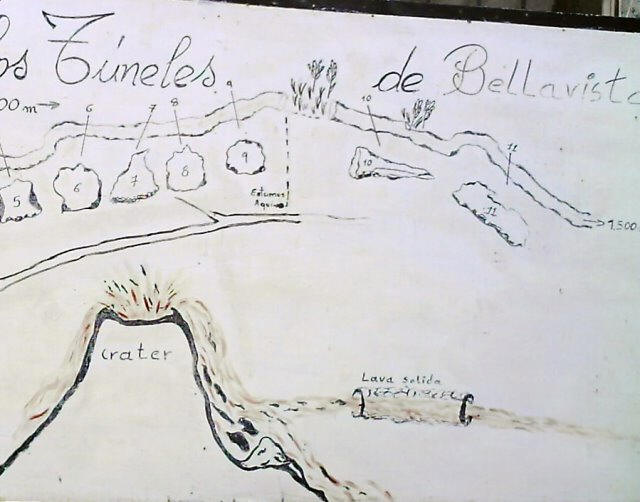
Puerto Ayora Galapagos: Sign explaining the dark 800 meter long lava
tunnels.
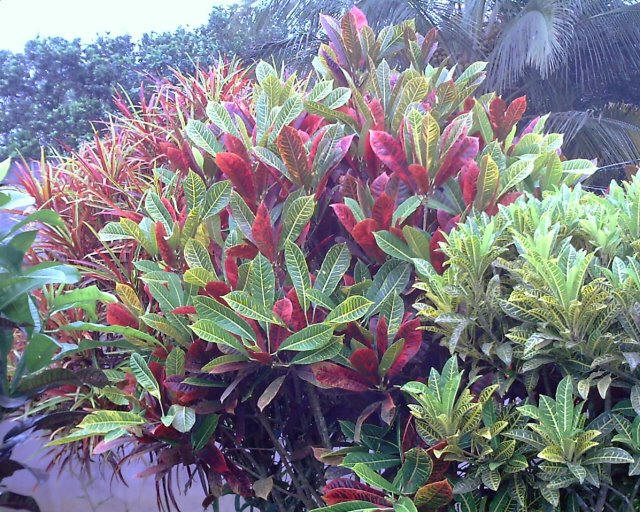
Puerto Ayora Galapagos: Colorful landscaping in someone's yard in the
little village of Bella Vista near the lava tunnels.
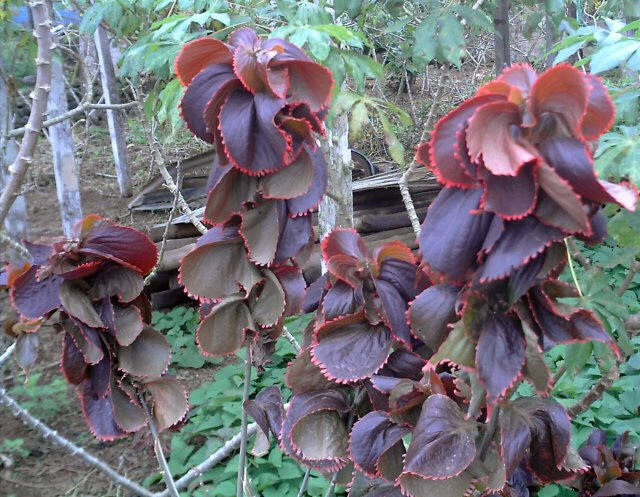
Puerto Ayora Galapagos: Colorful landscaping in someone's yard in the
little village of Bella Vista near the lava tunnels.

Puerto Ayora Galapagos: Colorful landscaping in someone's yard in the
little village of Bella Vista near the lava tunnels. tunnels.
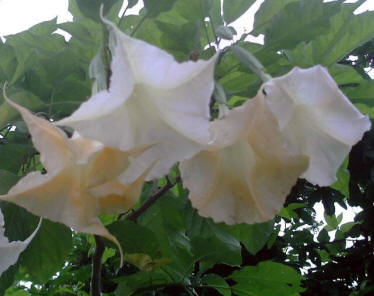
Puerto Ayora Galapagos: Colorful landscaping in someone's yard in the
little village of Bella Vista near the lava tunnels.
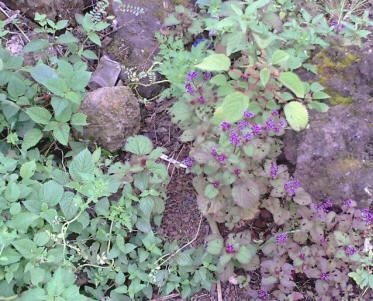
Puerto Ayora Galapagos: Colorful landscaping in someone's yard in the
little village of Bella Vista near the lava tunnels.
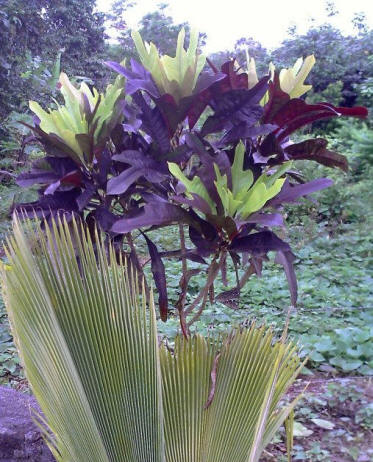
Puerto Ayora Galapagos: Colorful landscaping in someone's yard in the
little village of Bella Vista near the lava tunnels.
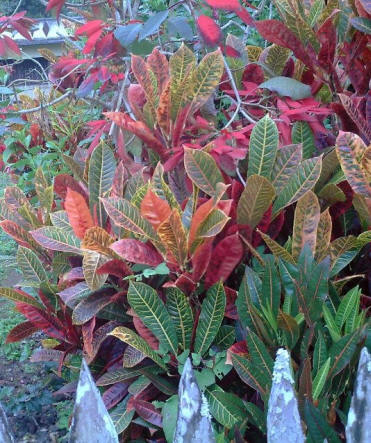
Puerto Ayora Galapagos: Colorful landscaping in someone's yard in the
little village of Bella Vista near the lava tunnels.
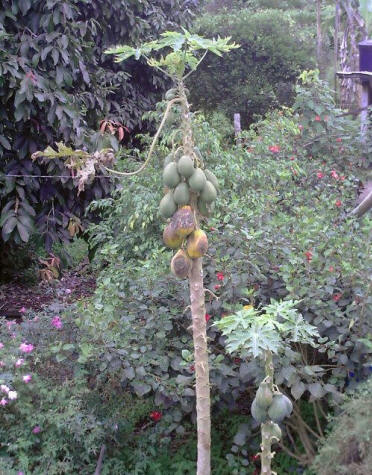
Puerto Ayora Galapagos: Papaya tree in someone's yard in the little
village of Bella Vista near the lava tunnels.

Puerto Ayora Galapagos: Papaya tree in someone's yard in the little
village of Bella Vista near the lava tunnels.
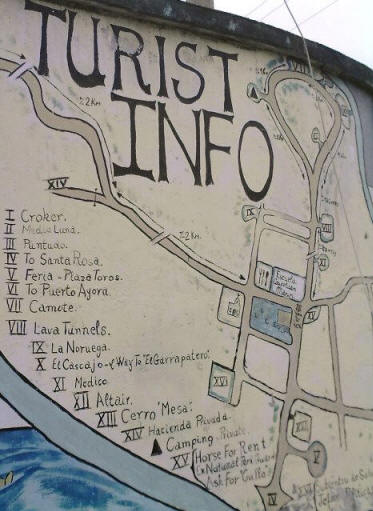
Puerto Ayora Galapagos: Tourist sign on the outskirts of the little
village of Bella Vista near the lava tunnels.
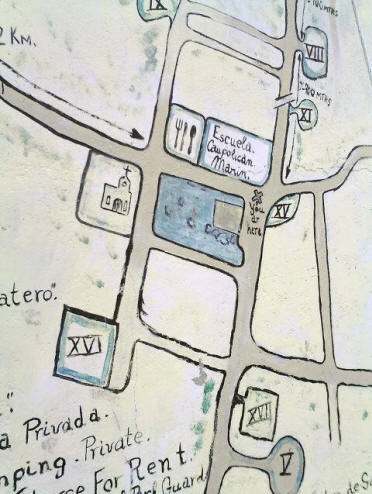
Puerto Ayora Galapagos: Tourist sign on the outskirts of the little
village of Bella Vista near the lava tunnels.
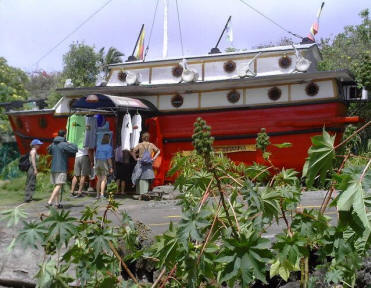
Puerto Ayora Galapagos: An old ship has been converted into a gift shop.
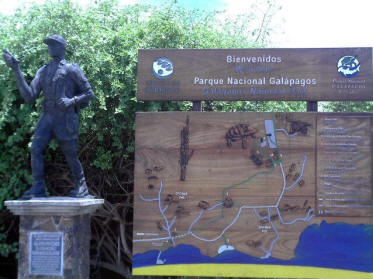
Puerto Ayora Galapagos: Sign at the entrance to the Darwin Research
Center.

Puerto Ayora Galapagos: A closer look at the sign near the entrance to
the Darwin Research Center.
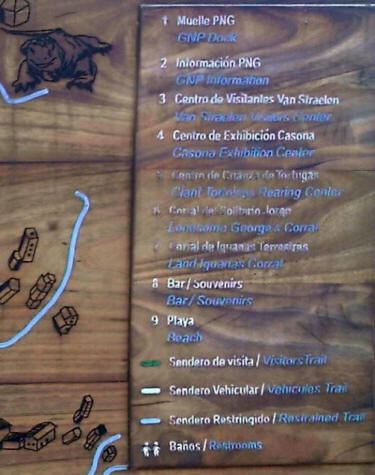
Puerto Ayora Galapagos: A closer look at the sign near the entrance to
the Darwin Research Center.
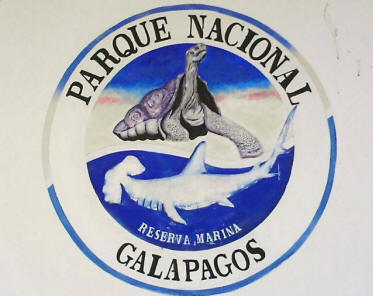
Puerto Ayora Galapagos: Sign at the entrance to the Darwin Research
Center.
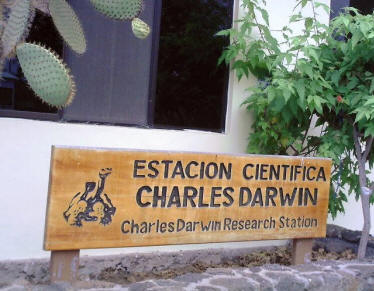
Puerto Ayora Galapagos: Sign at the office building in the Darwin
Research Center.

Puerto Ayora Galapagos: The Darwin Research Center is well connected.
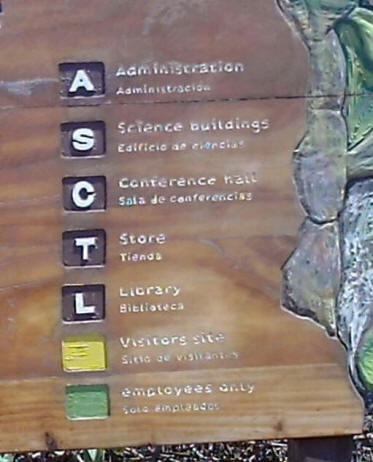
Puerto Ayora Galapagos: Sign at the office building in the Darwin
Research Center.
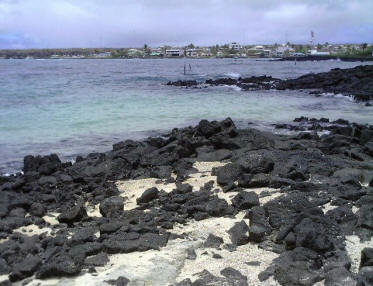
Puerto Ayora Galapagos: One of the beach areas within the Darwin
Research Center.
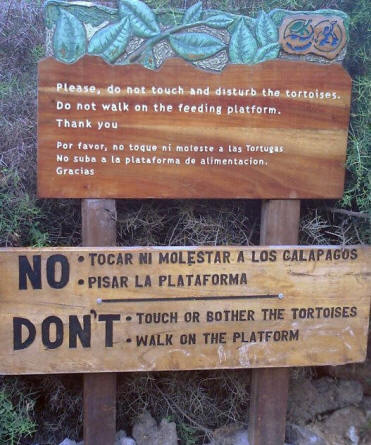
Puerto Ayora Galapagos: Sign at the entrance to the Darwin Research
Center.
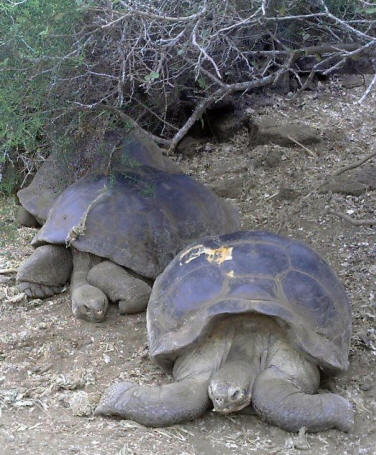
Puerto Ayora Galapagos: Some of the Giant Turtles at the Darwin Research
Center.
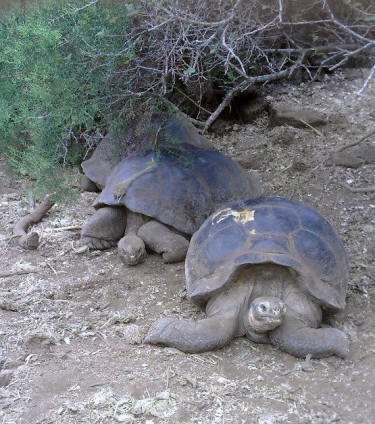
Puerto Ayora Galapagos: Some of the Giant Turtles at the Darwin Research
Center.
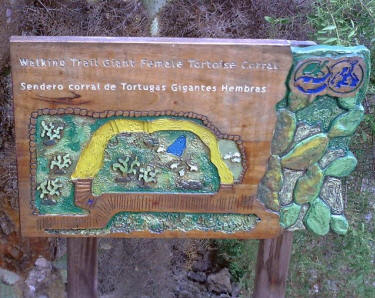
Puerto Ayora Galapagos: Sign in the Giant Turtles coral at the Darwin
Research Center.
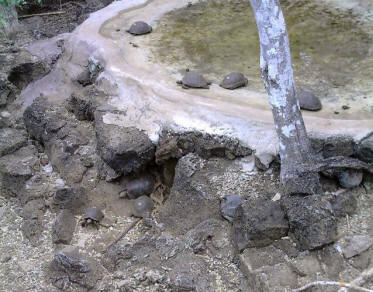
Puerto Ayora Galapagos: Baby turtles being reared for reintroduction
back to their island of origin.
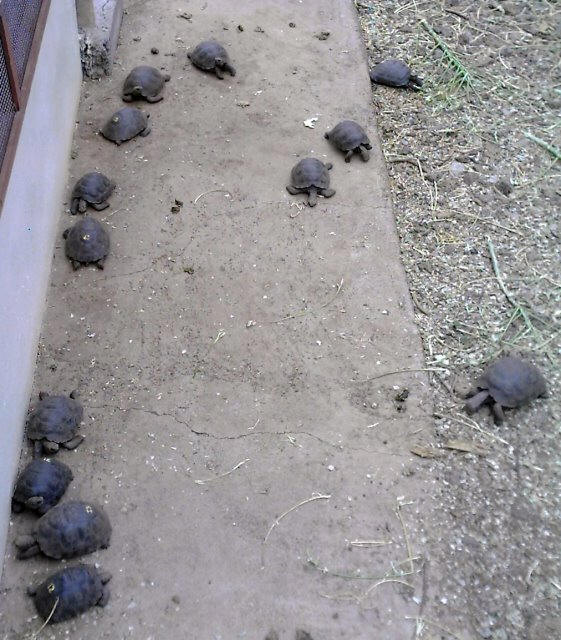
Puerto Ayora Galapagos: Baby turtles being reared for reintroduction
back to their island of origin.
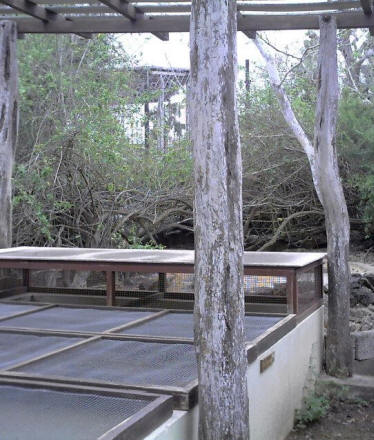
Puerto Ayora Galapagos: Pens for raising baby turtles for reintroduction
back to their island of origin.
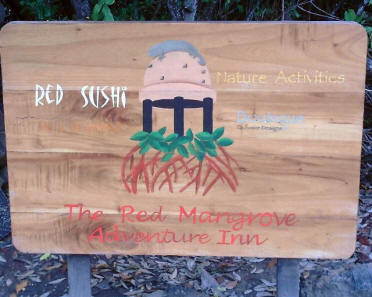
Puerto Ayora Galapagos: Sign in front of the entrance to my third and
final hotel, the Hotel Red Mangrove.
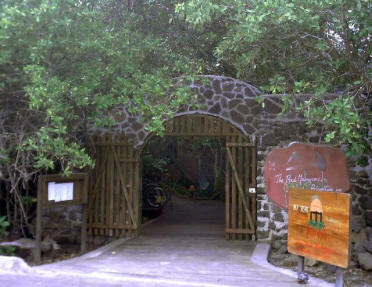
Puerto Ayora Galapagos: The entrance to my third and final hotel, the
Hotel Red Mangrove.
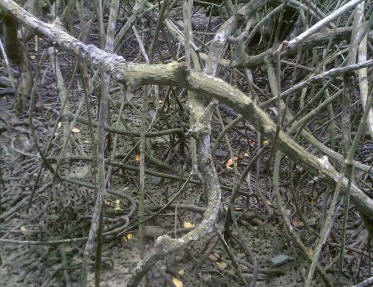
Puerto Ayora Galapagos: View from my room in the Hotel Red Mangrove at
low tide.
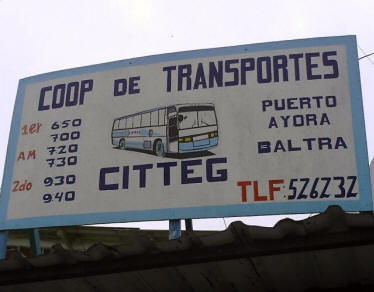
Puerto Ayora Galapagos: Sign in town showing the times for the bus up to
the airport ferry on the north shore of the island.

Puerto Ayora Galapagos: Sign near the channel linking Santa Cruz and
Baltra islands.

Puerto Ayora Galapagos: Sign near the channel linking Santa Cruz and
Baltra islands.
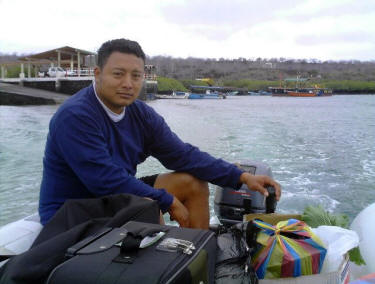
Puerto Ayora Galapagos: Ferry across the channel linking Santa Cruz and
Baltra islands.
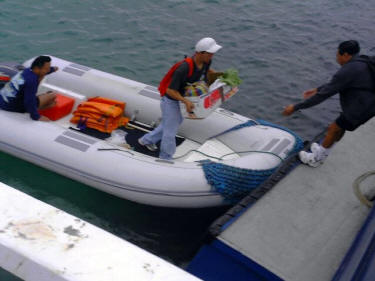
Puerto Ayora Galapagos: Ferry across the channel linking Santa Cruz and
Baltra islands.
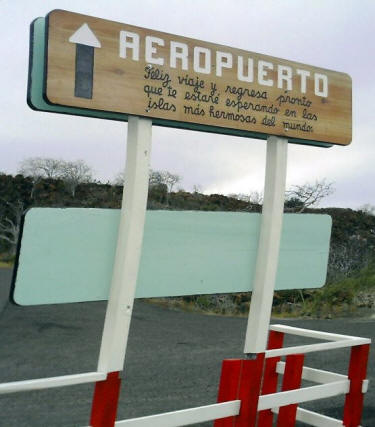
Puerto Ayora Galapagos: Dock at the channel linking Santa Cruz and
Baltra islands.
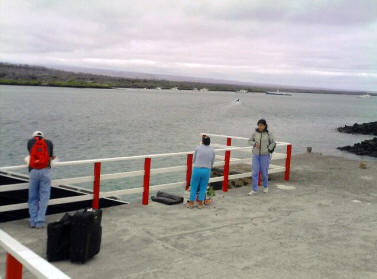
Puerto Ayora Galapagos: Dock at the channel linking Santa Cruz and
Baltra islands.
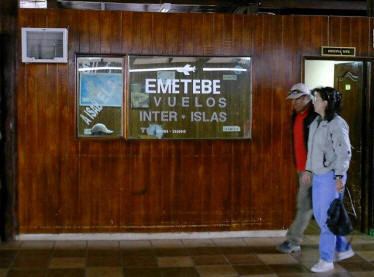
Puerto Ayora Galapagos: Around the airport on Baltra Island.
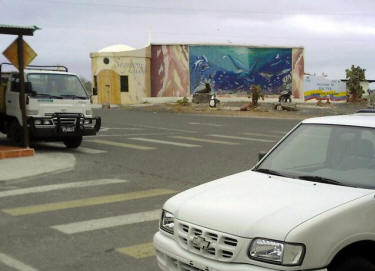
Puerto Ayora Galapagos: Around the parking lot at the airport on Baltra
Island.
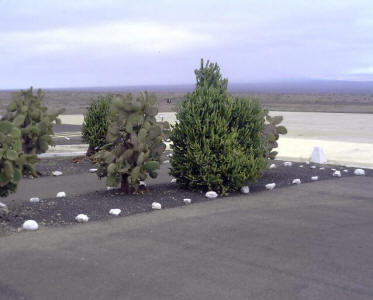
Puerto Ayora Galapagos: Landscaping around the airport on Baltra Island.
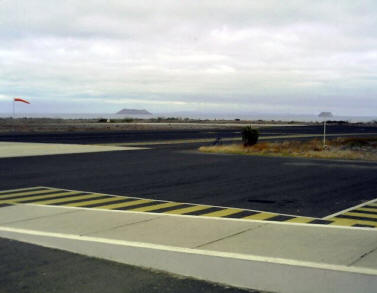
Puerto Ayora Galapagos: Airport runway at the airport on Baltra Island.
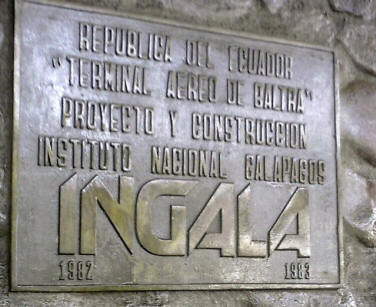
Puerto Ayora Galapagos: Dedication sign at the airport on Baltra Island.

Puerto Ayora Galapagos: Closer to the seal and mural at the airport on
Baltra Island.
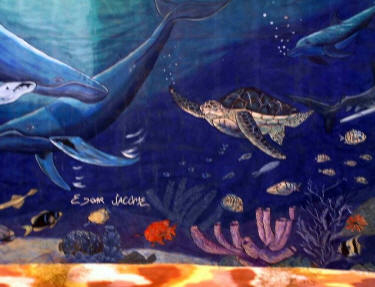
Puerto Ayora Galapagos: Signature on the mural at the airport on Baltra
Island.

Puerto Ayora Galapagos: From the ten passenger airplane that took us
from Baltra to San Cristobal.

Puerto Ayora Galapagos: From the ten passenger airplane that took us
from Baltra to San Cristobal.
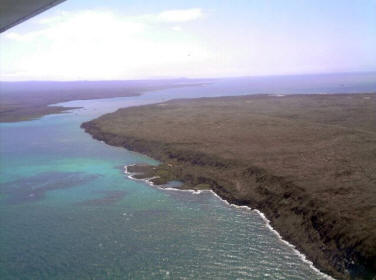
Puerto Ayora Galapagos: From the ten passenger airplane that took us
from Baltra to San Cristobal.

Puerto Ayora Galapagos: Passengers disembark from the airplane that took
us from Baltra to San Cristobal.
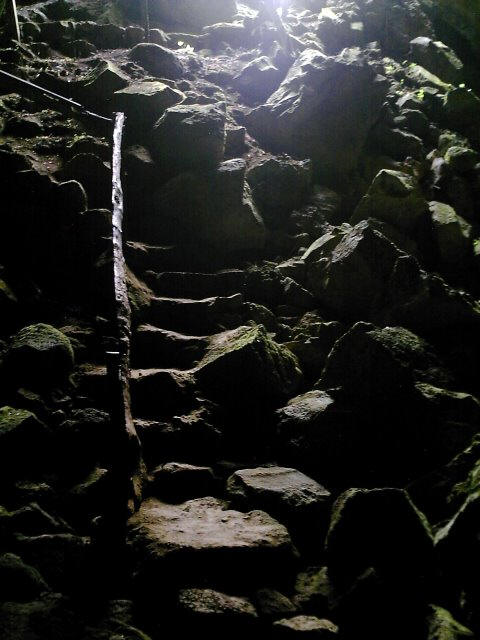
Puerto Ayora Galapagos: I got this
far into the dark 800 meter long lava tunnels and decided I'd seen enough.
I've seen dark before.
|
  1 October 2005 1 October 2005
Ponderous musings from the Galapagos
Islands,
A
Frigate
bird hangs nearly motionless, then
stretching its tail feathers in a scissor like maneuver swoops down
gracefully circling the bay before once again climbing to a
stationary place high above.
Pelicans struggle to flap, glide and
twist into the water, occasionally raising their long beaks to swallow a
fish. Several smaller black
Marine
Iguanas laze on a nearby breakwater of
volcanic rock, nearly invisible against the dark surfaces. A statuesque
Crane stands motionless, seemingly oblivious to my close presence. Fur
Seals effortlessly climb concrete stairs out
of the water barking nonchalantly and waddle onto a warm area of
the patio where they flop down to sun themselves like lazy dogs on a hot
summer afternoon.
Fearless
Finches flutter about as I walk among them.
Admittedly some of this wildlife activity is attributed to this Santa
Cruz Island hotel
owner's deliberate program of feedings to amuse her guests.
Peace,
Fred L Bellomy
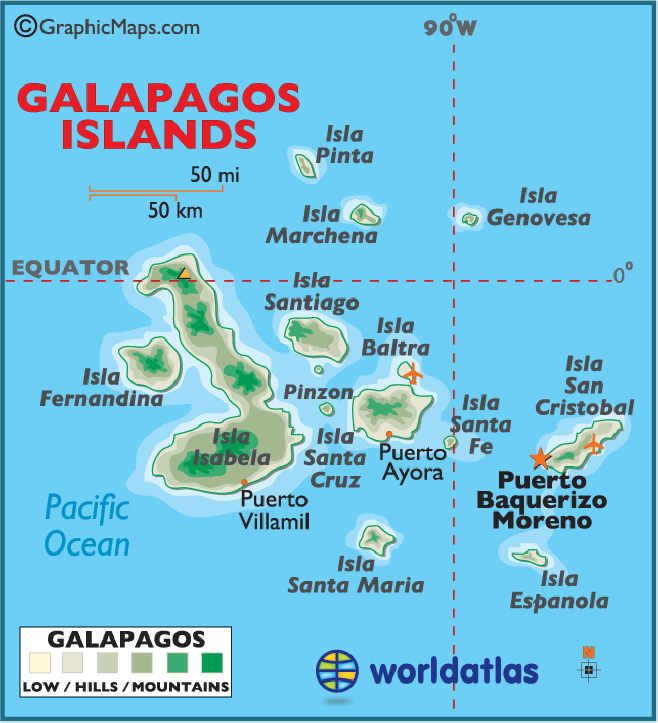
Few people who visit the Galapagos
Archipelago are aware that
Charles
Robert Darwin started his professional life as a
divinity school graduate after rejecting his father's urgings to pursue
a medical career. Fortunately, his insatiable curiosity about the natural
world led him to take a few college classes in the physical sciences
before graduating. At the impressionable young age of 22, one of his
professors who had himself declined the
opportunity, arranged for Charles to join the planned two year around the world
voyage of the HMS Beagle as the ship's naturalist, a position for which
his undergraduate academic training hardly qualified him.
Standing in the midst of so much wild
life myself and with a hundred and seventy year historical perspective, I
could imagine the amazement and wonder with which that young man must
have beheld the array of
strange
species and
variations found in the Galapagos. Little imagination is required
to see how differently land, aquatic and jungle Iguanas evolved
colorations which hide them from predators in those different physical
environments: brown on desert sand, dark gray on black volcanic rock and
green in the jungles. Likewise, the beaks of 13 varieties of Finches,
collectively known as
Darwin's
Finches over
time have assumed different specialized adaptations compatible with
available foods from one ecosystem to another.
History tells us Darwin studied his
copious notes taken during the five year voyage for thirty years before
publishing his paradigm shifting theory of evolution in "On
the Origin of Species by Means of Natural Selection." I enjoyed this succinct discussion of
Charles
Darwin's life around that time; check it out. His
personal journal
entries make it clear
his observations spanned the entire voyage, not just the more famous
month
in the Galapagos.
So simple
and logical that it is now accepted as the most plausible explanation
for the observed evidence by virtually every well educated person in the
world, Darwin's theory rankled fundamentalist religious leaders of his
day. At variance with the anachronistic pre-scientific creation myths
reflected in the Christian Bible and religious dogma from other traditions,
large numbers of true believers still cling
to the ancient teachings and remain unable
to dispassionately
examine the abundant evidence supporting
Darwin's conclusions.
I am saddened by the realization that
the human mind has not yet evolved to the point where rational thoughts
can reside in the same mind space as comforting emotionally powerful
beliefs which appear to conflict with objective reality. Each realm
makes enormous contributions to the well being of individuals and societies. The values of absolute faith are so overwhelmingly obvious to
any rational person I am at a loss to explain why beliefs in
preposterous ideas cause so much cognitive dissonance among those of us who worship evidence. Similarly, the throngs who base their lives on
"revealed truths" joyfully embrace most of the fruits of
science and the technology. It is only in the specific particulars which
contradict one another that our minds rebel against the non-dominant
realm. How sad. How short sighted.
Physicists know that Einstein's Theories
of Relativity are in harmony with cosmic observations, but lead to wrong
conclusions at the subatomic scale. The theory of Quantum Mechanics describes our
observations at that level, but is worthless on the galactic scale. So,
we hold both theories (and others) in our minds ready for use when
appropriate. Why not the same approach with faith and reason? My
knowledge that Ultimate Reality is forever unknowable does not prevent
me from enjoying a performance of the Salt Lake City Mormon Tabernacle
Choir or delighting in the glee with
which small children approach a Macy's Santa Claus. Fully understanding
the art and technology behind a contrived video production does not
prevent me from suspending judgment for a while and enjoying the
performance... as if it were real! Nor, am I distressed when I learn my
temporary beliefs were in fact mere illusions.
But, I jump ahead. The short flight from
Quito on the mainland landed on the
Galapagos island of
San
Cristobal. After paying the (cash only) $100 park
entrance fee, a fifteen minute walk got me into the unique village of
Puerto
Baquerizo Moreno. It is a very
small village, easily walked top to bottom, east to west in under an
hour. I checked several hotels; none could vaguely be considered first
class. The best I could find turned out to be the $50 cash Yeclas Surf
Guest House at the westernmost end of town, not far from the main boat
dock. During my two night stay I managed to visit the impressive
Galapagos Interpretation Center and hike trails through the La Loberia National Park where I nearly stumbled
over brown
Land
Iguanas and got close enough to many Fur Seals
for close up pictures. None of the wildlife seemed to have any fear of me
and allowed quite close approaches without protest. Photos I took while
on San Cristobal Island are
here.
There are two airports in the
Galapagos
archipelagos, one here on San Cristobal and the other
on the tiny island of Baltra just above the main island of Santa Cruz.
That one has been closed since May 2005 for runway maintenance.
Political considerations have delayed completion much to the
consternation of many business people who claim commercial activity
has slowed noticeably. A narrow channel separates Baltra from the main
island of Santa Cruz.
After my two night exploration of San Cristobal a fast and bumpy speedboat ride got me to the island of
Santa
Cruz in a little over two hours... the
longest two hours I've endured in quite some time. Everyone on the 14
passenger craft looked like they were about to be sick most of the way.
A nursing baby and its mother actually did vomit. At one point a huge
wave rolled our little boat clockwise nearly ninety degrees dumping all
the passengers on the port side into the laps of those on the starboard
side. Ron and Cindy, a young backpacking couple from Britain who arrived in a
different speedboat said three people on their boat got sick. One of the
little kids on our boat cried the entire trip. This is not a
pleasure cruise! I resolved on the spot to find an alternative for the
return trip.
The first hotel I tried in Puerto Ayora,
the main town on the island of Santa Cruz was the twice recommended $84
Hotel
Silberstein. On first inspection its elegant
tropical decor is pleasant enough, but the rooms are small and feature
cold showers! Two nights there and a day of hotel shopping led me to my second
Hotel, the Sur-y-Mar "Sun and Sea" sitting right on the
bay. The Hotel is charming for several reasons. First, the owner feeds
the wild life to keep the place swarming with docile friendly critters.
The Pelicans and seals get whole fish; the Frigate birds get the
leftover guts. It is a small place with just five screened rooms... all open to
the breezes night and day. Nights are chilly, decor is funky, mornings
are announced by barking seals. At $45 the place is a good value, but
two mornings of sneezing and I resolved to sample something
fancier.
One of the three most expensive lodges on
the island is the
Red
Mangrove Adventure Inn. Breakfast in the polished wood, glass
enclosed dining-room overlooking the perpetually active bay one morning
while still at the chilly Hotel Sur-y-Mar convinced me to spend the
big bucks for a chance to stay there a couple nights. An artistic
carpenter's dream, every room is handmade. My $107 room, the cheapest in
the hotel is reached by a nine foot high overpass that crosses tangles
of Mangrove roots submerged periodically by the high tides. The kitchen
advertises Japanese cuisine for dinner, but only the uninformed would
consider the enjoyable fare actually Japanese.
One of my explorations took me to
the highlands and a visit through the
lava
tunnels. All of the islands owe their origin to
under sea volcanic activity. Another day I walked the beach at
Tortuga
Bay where I found
Blue
Footed Boobie Birds and a large huddle of Marine Iguanas. Photos taken while on Santa Cruz Island are
here.
With memories of my stomach retching
roller-coaster speedboat ride still fresh, I searched out the small
light plane service back to San Cristobal where the airport with service
back to the mainland is located. The eight passenger plane operated by Emetebe
flies six times a week at 09:00, but I had to wait three days for an
available seat. Then, on the day of my scheduled departure the plane had
a mechanical problem that delayed our departure five hours,
necessitating a layover on San Cristobal to make connections with the
next daily flight to Guayaquil. As a reward for my persistence I ordered
one of the $13 lobster dinners available at the Miconia Cabanas
Restaurant in San Cristobal. Popcorn is served as a vegetable in Ecuador
and a big bowl accompanied my lobster this evening... along with a large
bottle of Brama beer for medicinal purposes.
Onward now to Guayaquil, Cuenca and then
into Peru for a visit to Machu Picchu. More in the next postcard.
Peace,
Fred Bellomy
PS:
"Too much religion may be a dangerous thing." An article by Rosa Brooks in
the 10/1/05 issue of the LA Times entitled
"The dark side of faith,"
discusses the implications of
research
reported in the October 2005 issue of the Journal of Religion and Society, a
publication of Creighton University's Center for the Study of Religion.
The study, by evolutionary scientist Gregory S. Paul, looks at the
correlation between levels of "popular religiosity" and
various "quantifiable societal health" indicators in 18
prosperous democracies, including the United States. FB
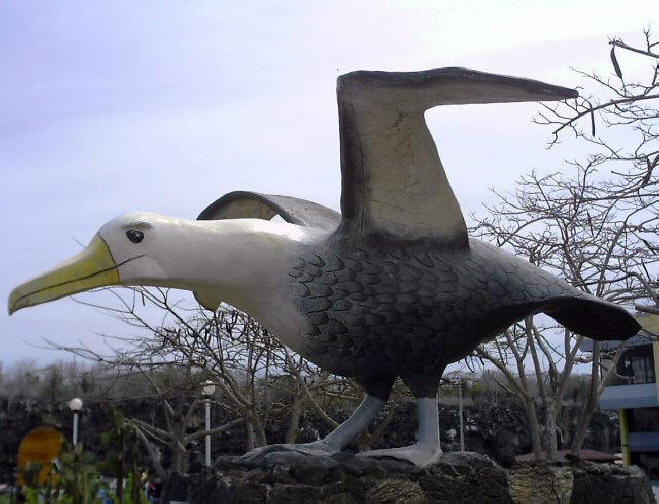
Puerto Ayora Galapagos: An interesting sculpture at the docks.
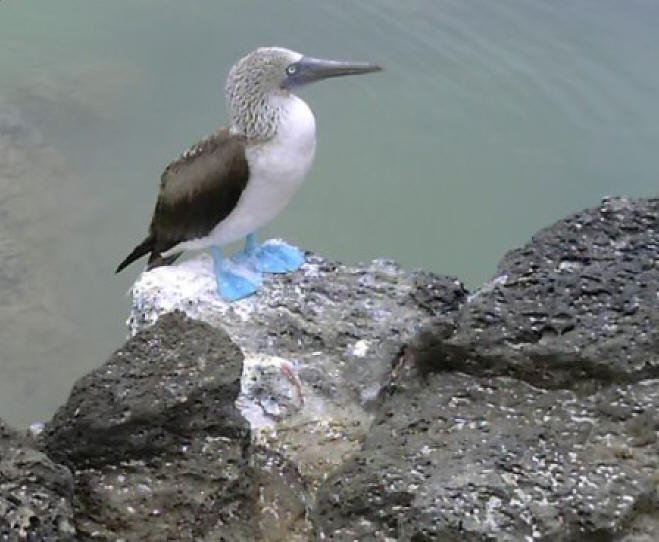
Puerto Ayora Galapagos: Blue Footed Boobie on Santa Cruz Island in the
Galapagos.

Puerto Ayora Galapagos: Me too; I like Boobies. I saw several tourists
wearing a version of this t-shirt, all men!
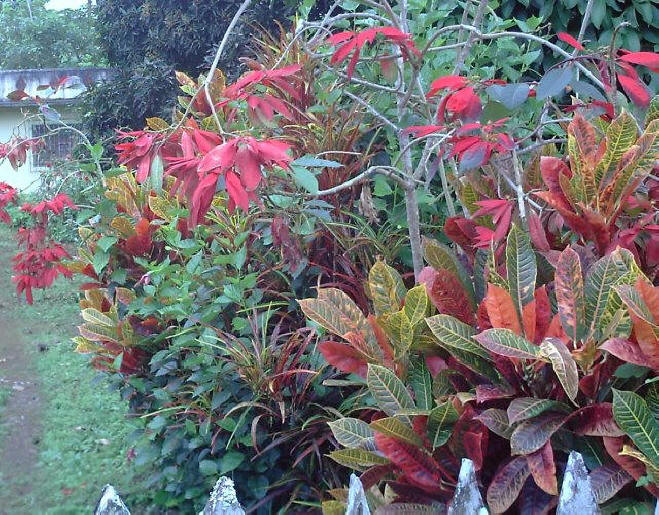
Puerto Ayora Galapagos: Colorful landscaping in someone's yard in the
little village of Bella Vista near the lava tunnels.
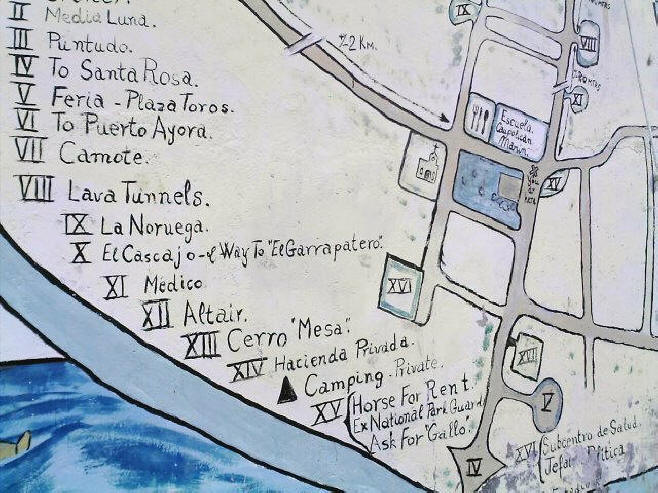
Puerto Ayora Galapagos: Tourist sign on the outskirts of the little
village of Bella Vista near the lava tunnels.
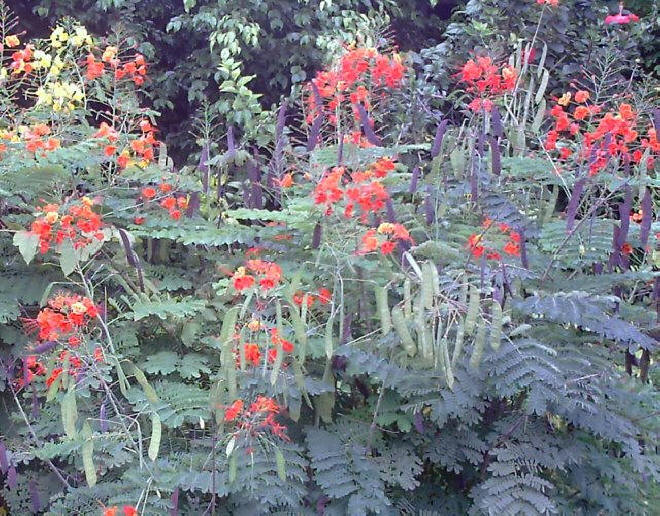
Puerto Ayora Galapagos: Colorful landscaping in someone's yard in the
little village of Bella Vista near the lava
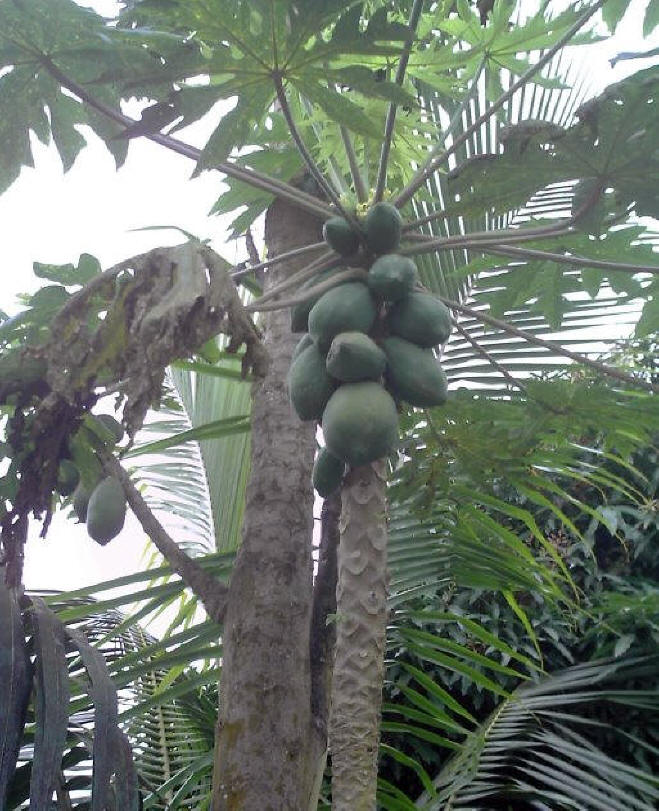
Puerto Ayora Galapagos: Papaya tree in someone's yard in the little
village of Bella Vista near the lava tunnels.
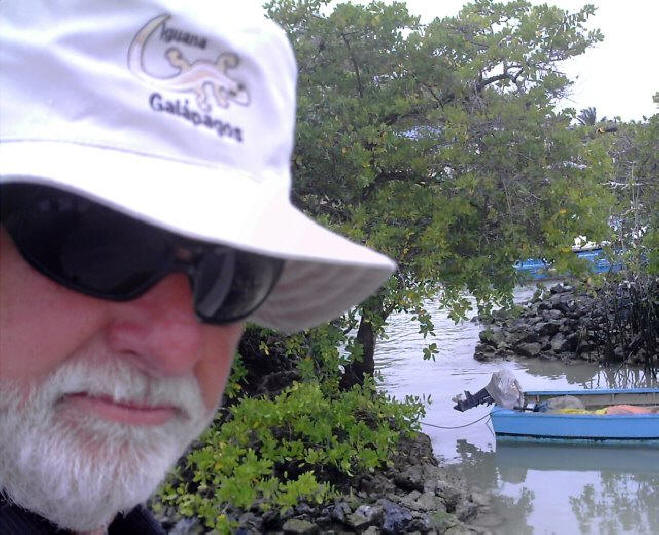
Puerto Ayora Galapagos: After tolerating a painful sunburned face I
finally broke down and bought a hat. It looks touristy, but it works!

Puerto Ayora Galapagos: Several dozen aquatic iguanas in Bahia Tortuga
Park where I saw no turtles.
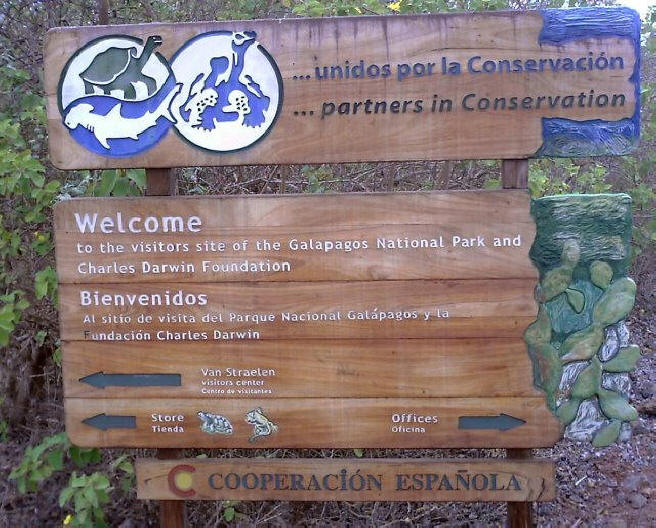
Puerto Ayora Galapagos: Sign at the entrance to the Visitors Center.
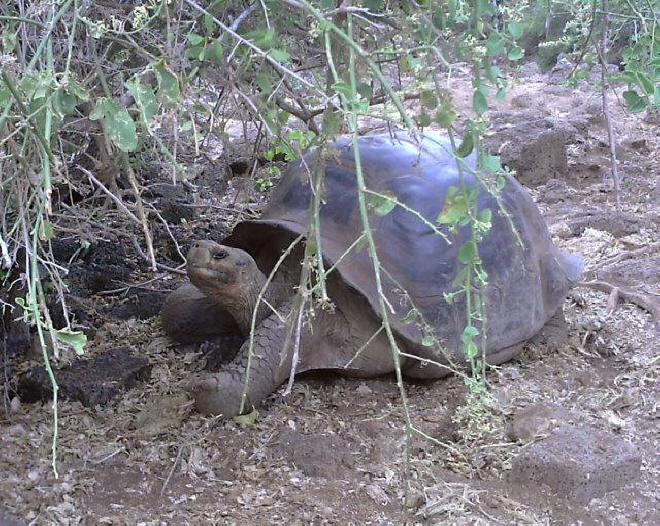
Puerto Ayora Galapagos: Some of the Giant Turtles at the Darwin Research
Center.

Puerto Ayora Galapagos: Sign at the entrance to the Darwin Research
Center.
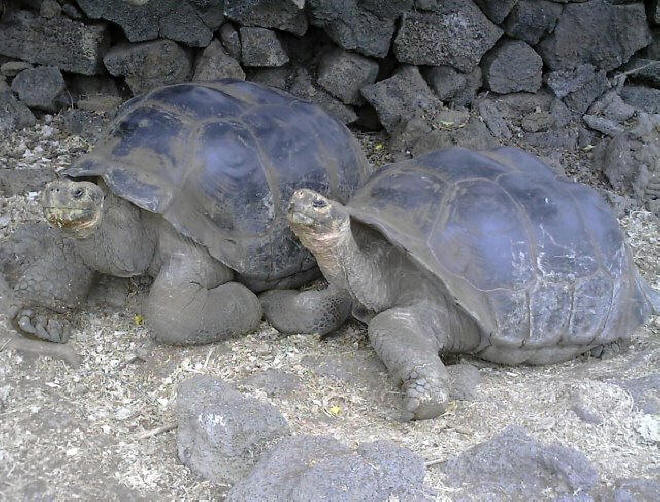
Puerto Ayora Galapagos: Some of the Giant Turtles at the Darwin Research
Center.

Puerto Ayora Galapagos: Elevated walkway over the Giant Turtles coral at
the Darwin Research Center.
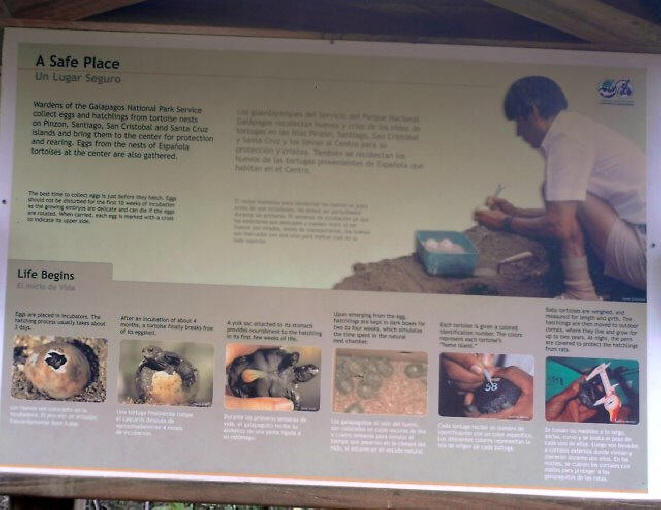
Puerto Ayora Galapagos: Explanation of the baby turtles being reared for
reintroduction back to their island of origin.

Puerto Ayora Galapagos: "House pet" at the Hotel Sol y Mar where I stayed a
few days.
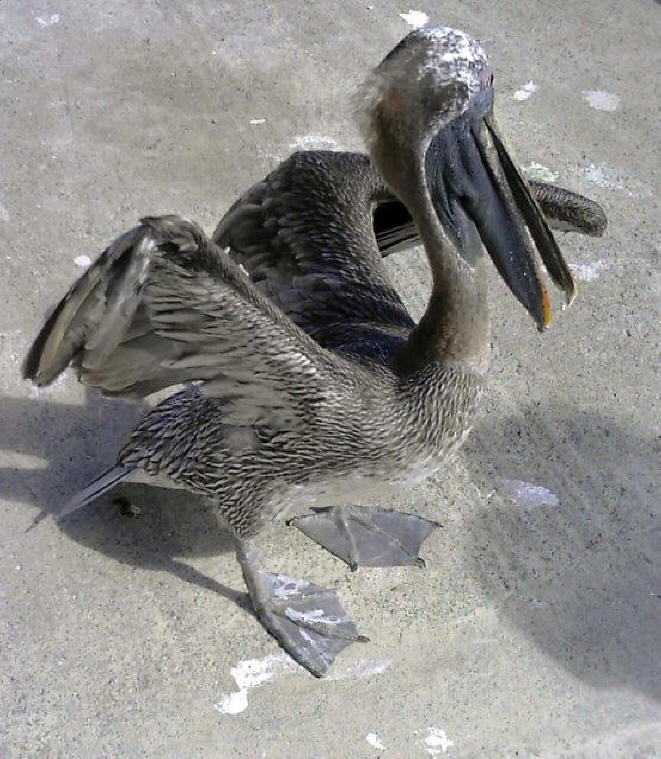
Puerto Ayora Galapagos: My second hotel sits on the bay. Hotel Sol y Mar is
a funky place run by a woman who keeps the wild life coming with daily
feedings.
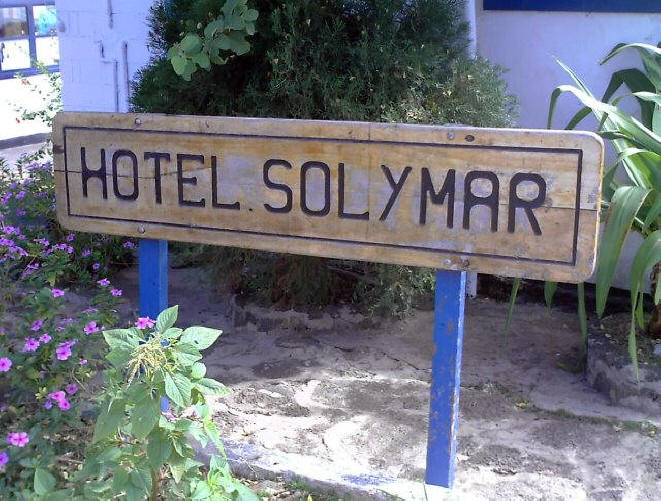
Puerto Ayora Galapagos: My second hotel sits on the bay. Hotel Sol y Mar
is a funky place run by a woman who keeps the wild life coming with
daily feedings.
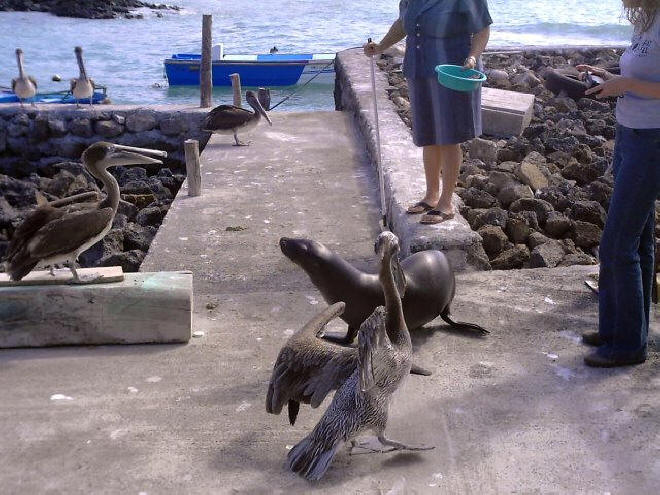
Puerto Ayora Galapagos: My second hotel sits on the bay. Hotel Sol y Mar
is a funky place run by a woman who keeps the wild life coming with
daily feedings.
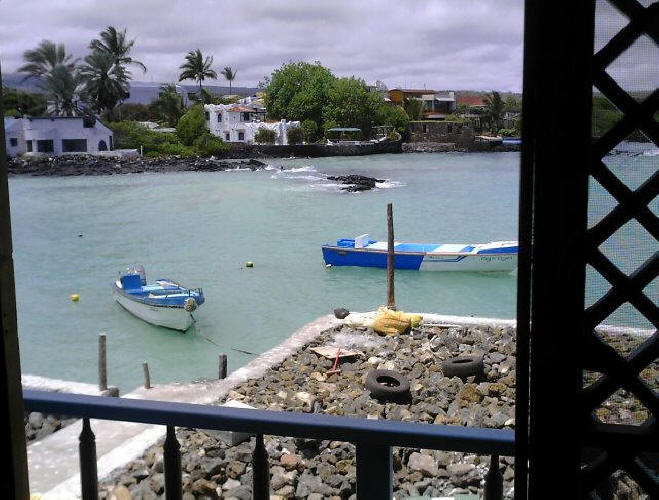
Puerto Ayora Galapagos: View from my room at the Hotel Sol y Mar where I
stayed a few days.
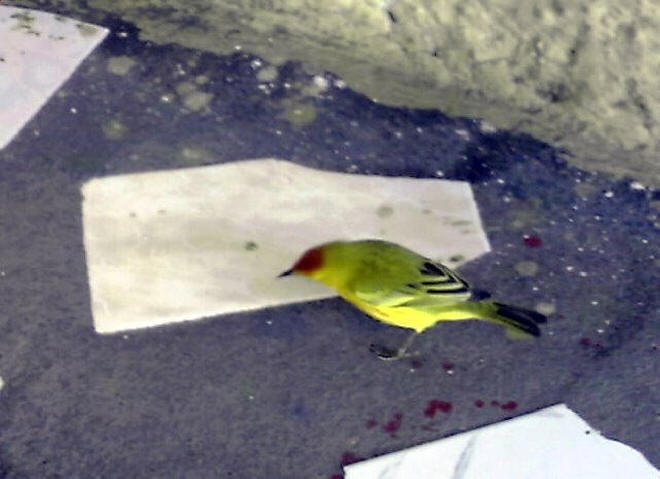
Puerto Ayora Galapagos: "House pet" at the Hotel Sol y Mar where I stayed
two days.

Puerto Ayora Galapagos: This is the office building that faces the sea
at my second hotel, the Hotel Sol y Mar or Sun and Sea.
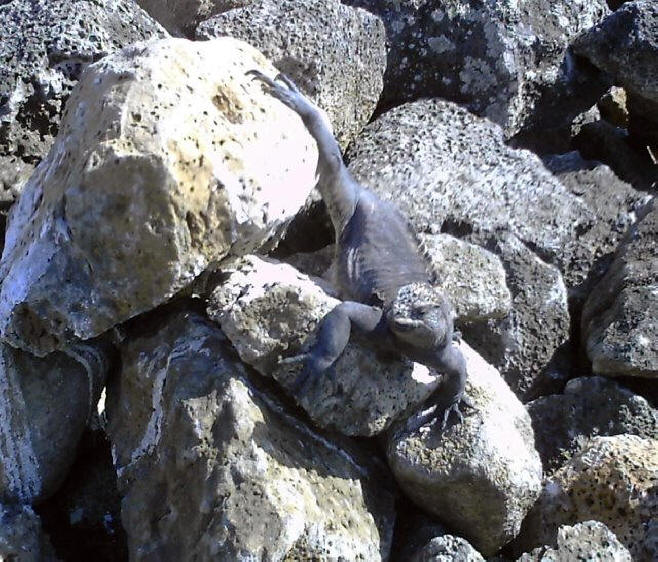
Puerto Ayora Galapagos: My second hotel sits on the bay. Hotel Sol y Mar is
a funky place run by a woman who keeps the wild life coming with daily
feedings.

Puerto Ayora Galapagos: Unfinished boat awaits the return of Noah's
sons.
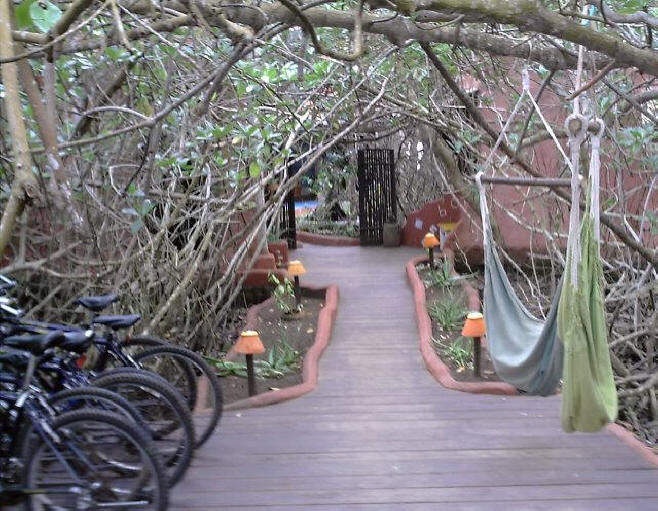
Puerto Ayora Galapagos: Tunnel-like entrance to my third and final
hotel, the Hotel Red Mangrove.
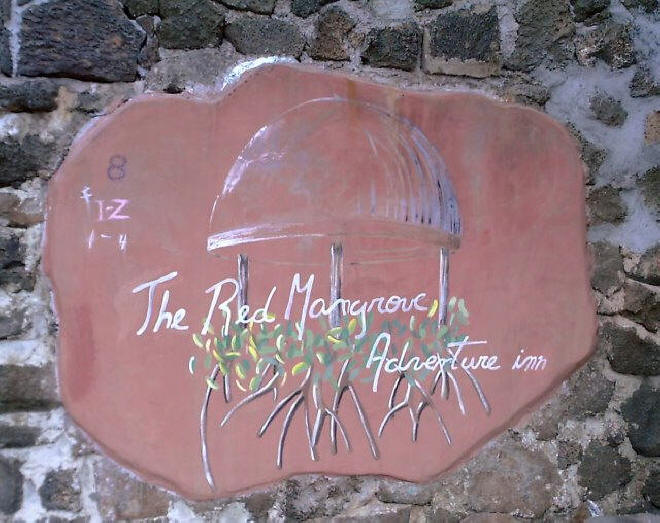
Puerto Ayora Galapagos: Sign in front of the entrance to my third and
final hotel, the Hotel Red Mangrove.
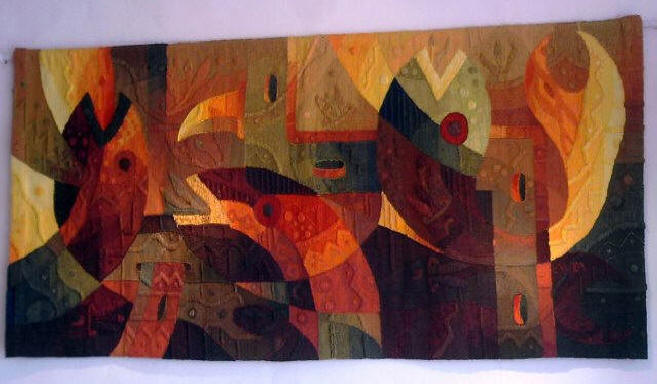
Puerto Ayora Galapagos: A remarkable tapestry by Peruvian artist Maximo
Laura hanging in the dining room of the Hotel Red Mangrove.
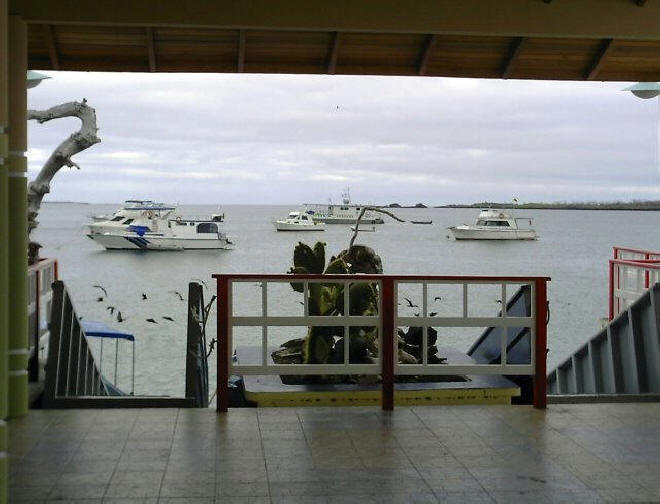
Puerto Ayora Galapagos: Through the bay restaurant windows at the Red
Mangrove Hotel.
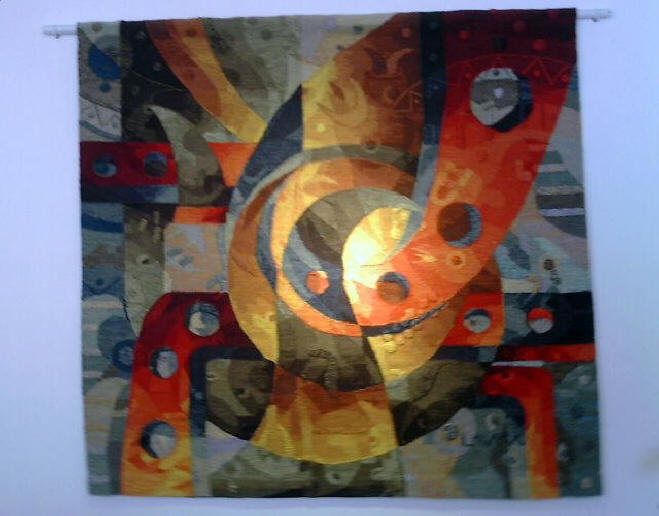
Puerto Ayora Galapagos: Another remarkable tapestry by Peruvian artist
Maximo Laura.

Puerto Ayora Galapagos: Drinking water is delivered to customers in this
truck.

Puerto Ayora Galapagos: Volunteers sexing and banding Boobie Birds
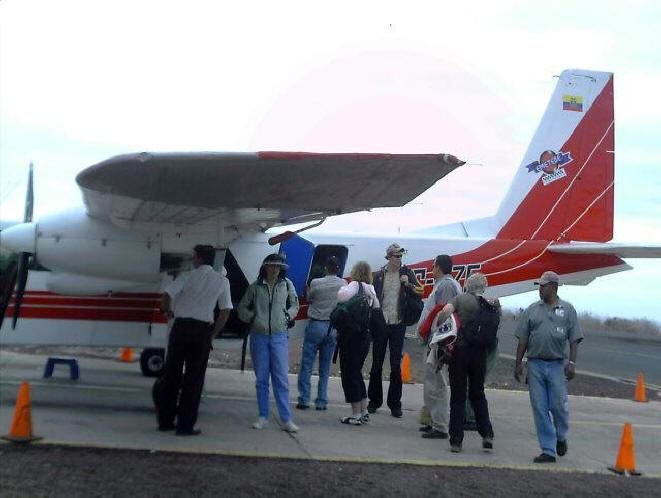
Puerto Ayora Galapagos: Passengers disembark from the airplane that took
us from Baltra to San Cristobal.

San Cristobal Galapagos: The Hotel Casa Blanca where I spent one night
before continuing on to Guayaquil.
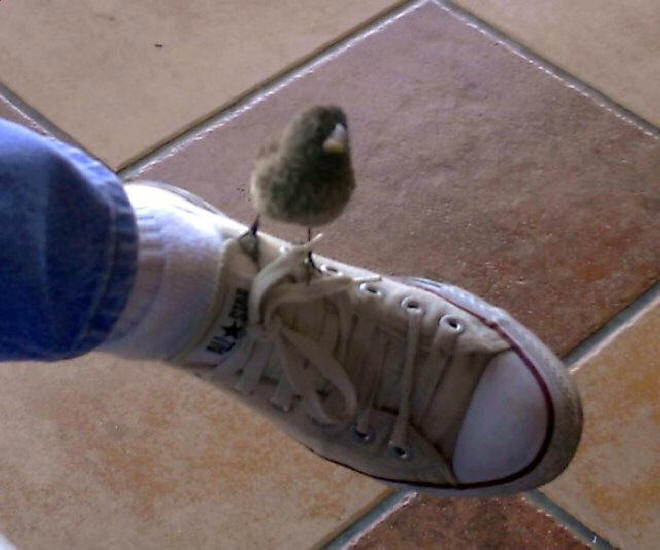
Puerto Ayora Galapagos: A passenger's stationary foot is a fine place to
perch.
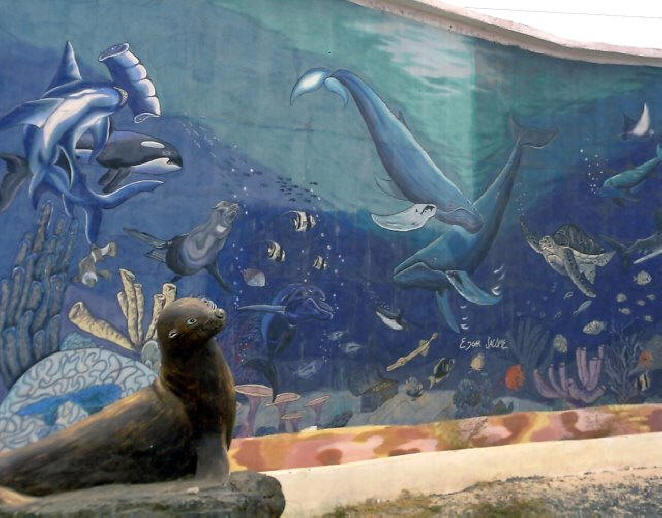
Puerto Ayora Galapagos: Aquatic mural and realistic seal sculpture on a
building at the airport on Baltra Island.
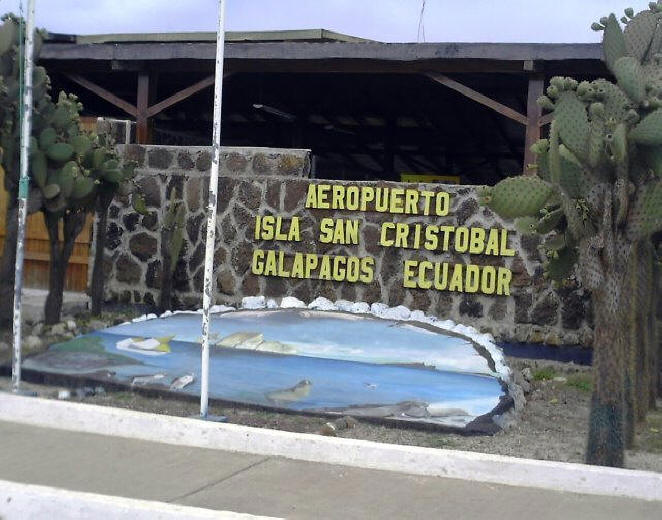
San Cristobal Galapagos: The Island airport from which I fly to Guayaquil.

Puerto Ayora Galapagos: One of the beach areas within the Darwin Research
Center.
|
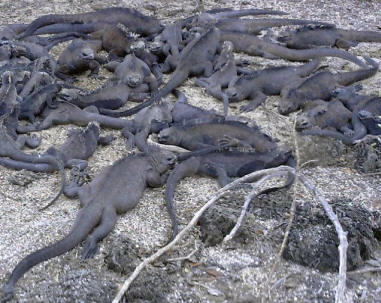
Puerto Ayora Galapagos: Several dozen aquatic iguanas in Bahia Tortuga Park.
They didn't move much.

Puerto Ayora Galapagos: A solitary pelican at the quiet bay in Bahia Tortuga
Park where I discovered a pair of Boobies.
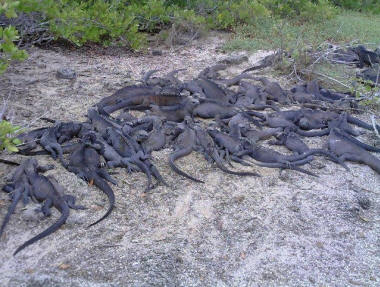
Puerto Ayora Galapagos: Looks like a gathering of aquatic iguanas in Bahia
Tortuga Park. For what purpose I never learned.
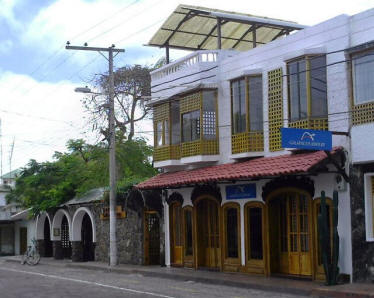
Puerto Ayora Galapagos: My first hotel, the Silberstein.
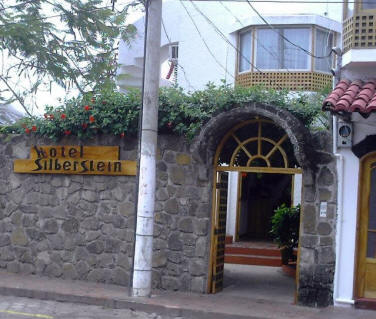
Puerto Ayora Galapagos: My first hotel, the Silberstein.
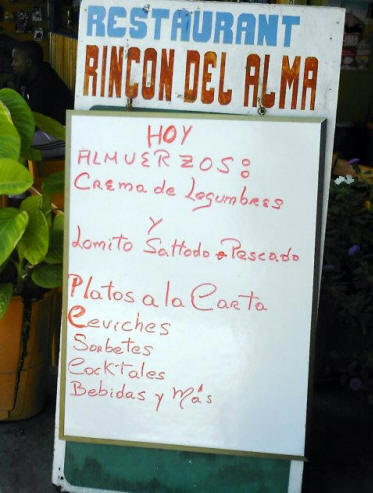
Puerto Ayora Galapagos: Daily special at a local cafe.
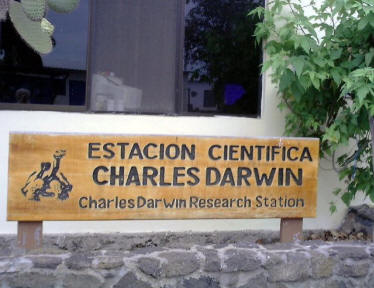
Puerto Ayora Galapagos: Entrance to the Charles Darwin Research Center.
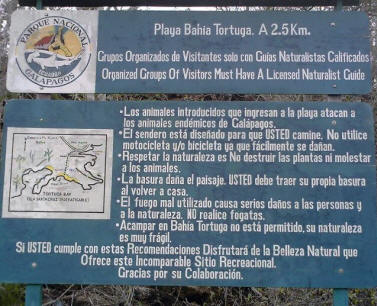
Puerto Ayora Galapagos: Sign at the entrance to Bahia Tortuga Park where I
saw no turtles, but dozens of aquatic iguanas and a pair of Boobies.

Puerto Ayora Galapagos: Sign at the entrance to Bahia Tortuga Park where I
saw no turtles, but dozens of aquatic iguanas and a pair of Boobies.

Puerto Ayora Galapagos: The Great Wall leading into Bahia Tortuga Park where
I saw no turtles, but dozens of aquatic iguanas and a pair of Boobies.
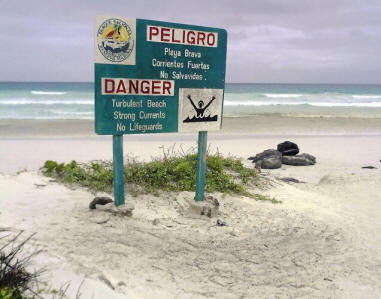
Puerto Ayora Galapagos: Sign on the beach in Bahia Tortuga Park. It speaks
for itself.
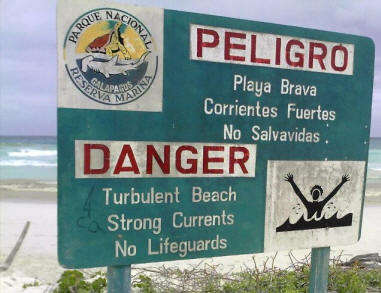
Puerto Ayora Galapagos: Sign at the entrance to the beach in Bahia Tortuga
Park.
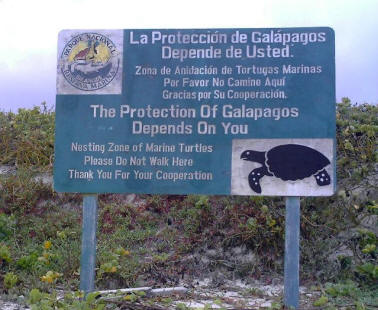
Puerto Ayora Galapagos: Sign on the beach in Bahia Tortuga Park. Much of the
area around the footpath is off limits to visitors.

Puerto Ayora Galapagos: Sign on the beach in Bahia Tortuga Park. Visitors
must stay on the narrow paths.

Puerto Ayora Galapagos: A couple aquatic iguanas in Bahia Tortuga Park. They
allowed me to approach quite close.
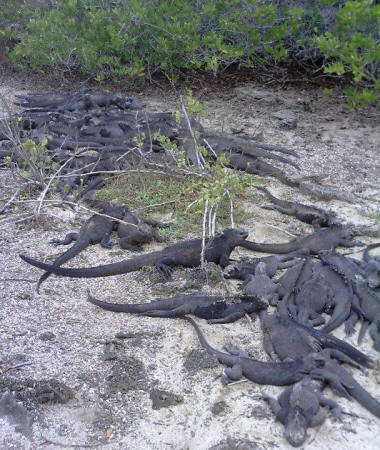
Puerto Ayora Galapagos: Another shot of the remarkable clustering of aquatic
iguanas in Bahia Tortuga Park.

Puerto Ayora Galapagos: A quiet bay in Bahia Tortuga Park where I found a
pair of Boobies.
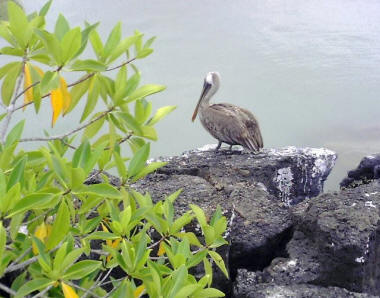
Puerto Ayora Galapagos: A solitary pelican at the quiet bay in Bahia Tortuga
Park where I discovered a pair of Boobies.
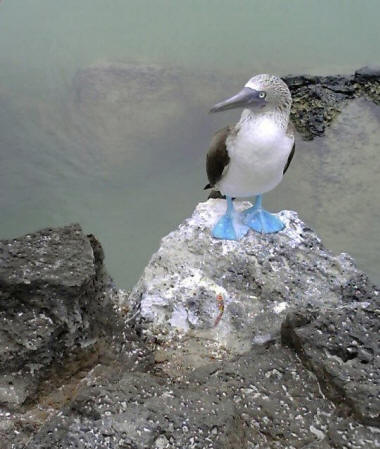
Puerto Ayora Galapagos: One of the pair of Blue Footed Boobies I found near
the quiet bay in Bahia Tortuga Park.

Puerto Ayora Galapagos: The pair of Boobies I found near the quiet bay in
Bahia Tortuga Park.
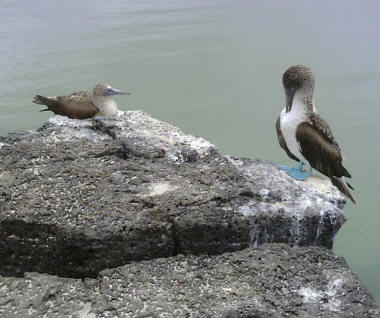
Puerto Ayora Galapagos: The pair of Boobies I found near the quiet bay in
Bahia Tortuga Park.
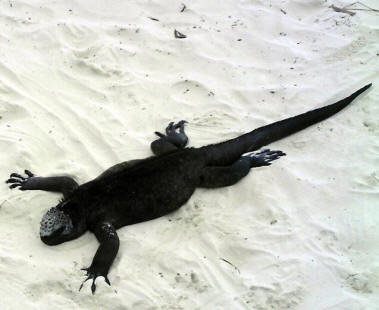
Puerto Ayora Galapagos: Another iguana I found near the quiet bay in Bahia
Tortuga Park. His dark body against the white sand would make him an easy
prey for predators.
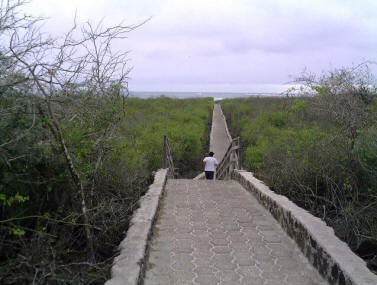
Puerto Ayora Galapagos: Another shot of the kilometer long stone walkway out
to the beach at Bahia Tortuga Park.
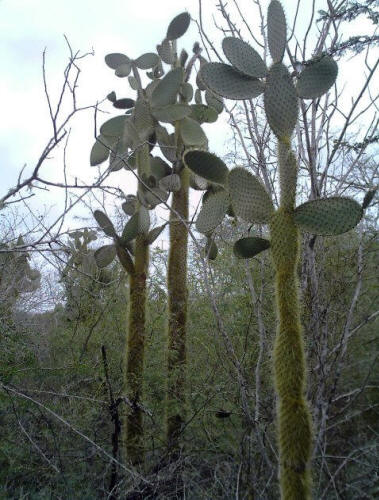
Puerto Ayora Galapagos: Along the stone walkway out to the beach at Bahia
Tortuga Park I became fascinated by this unusual variety of cactus: the
Opuntia Cactus Trees.
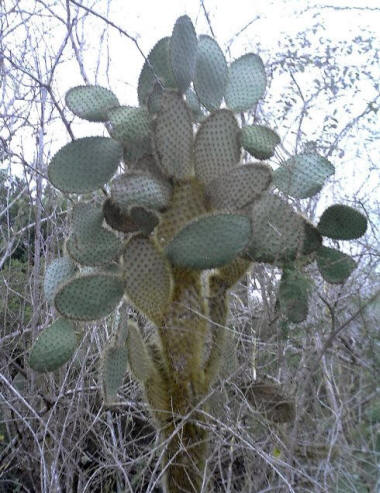
Puerto Ayora Galapagos: Along the stone walkway out to the beach at Bahia
Tortuga Park I became fascinated by this unusual variety of cactus: the
Opuntia Cactus Trees.

Puerto Ayora Galapagos: Along the stone walkway out to the beach at Bahia
Tortuga Park I became fascinated by this unusual variety of cactus: the
Opuntia Cactus Trees.

Puerto Ayora Galapagos: Along the stone walkway out to the beach at Bahia
Tortuga Park I became fascinated by this unusual variety of cactus: the
Opuntia Cactus Trees.
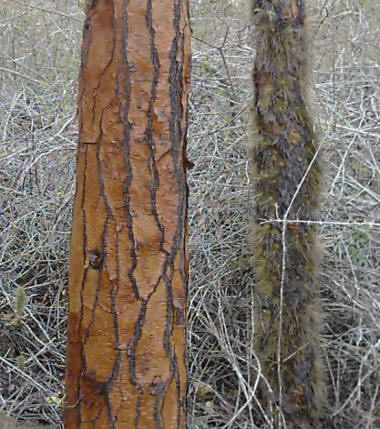
Puerto Ayora Galapagos: Another example of this unusual variety of cactus:
the Opuntia Cactus Trees. Here compare old and young trunks.
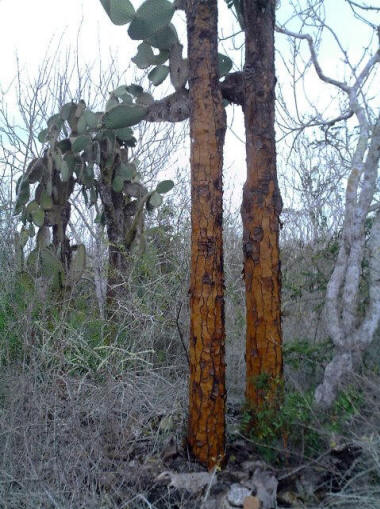
Puerto Ayora Galapagos: More examples of this unusual variety of cactus: the
Opuntia Cactus Trees. Here compare old and young trunks.
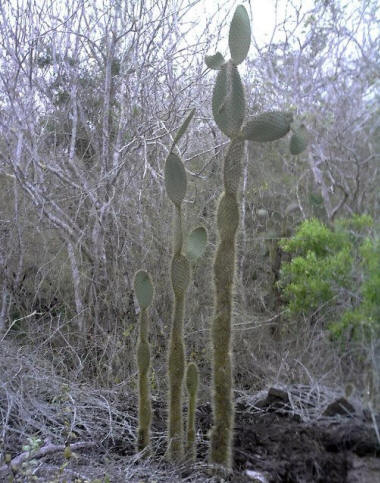
Puerto Ayora Galapagos: Opuntia Cactus Trees.
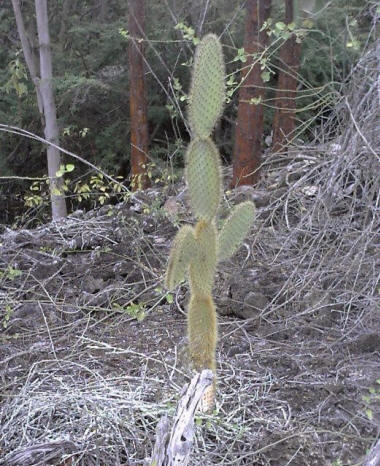
Puerto Ayora Galapagos: A young Opuntia Cactus Tree.
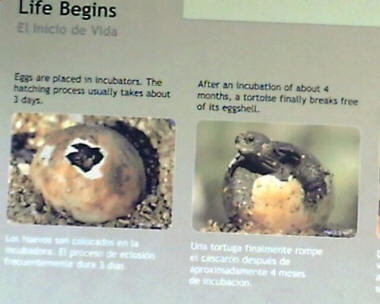
Puerto Ayora Galapagos: Explanation of the baby turtles being reared for
reintroduction back to their island of origin.
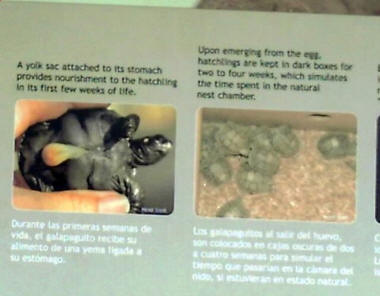
Puerto Ayora Galapagos: Explanation of the baby turtles being reared for
reintroduction back to their island of origin.
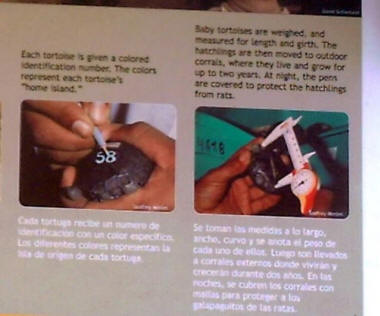
Puerto Ayora Galapagos: Explanation of the baby turtles being reared for
reintroduction back to their island of origin.
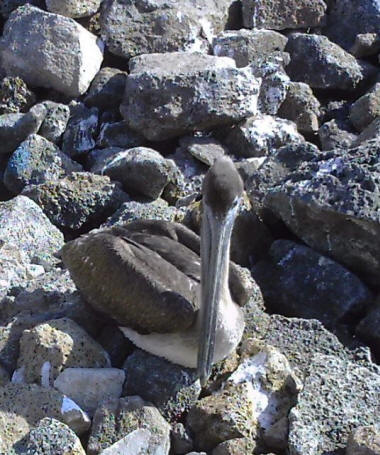
Puerto Ayora Galapagos: My second hotel sits on the bay. Hotel Sol y Mar is
a funky place run by a woman who keeps the wild life coming with daily
feedings.
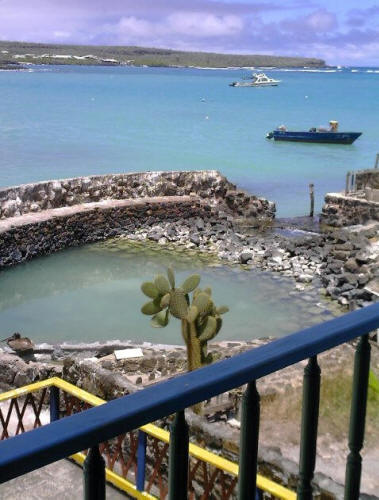
Puerto Ayora Galapagos: View from my room at the Hotel Sol y Mar where I
stayed a few days.
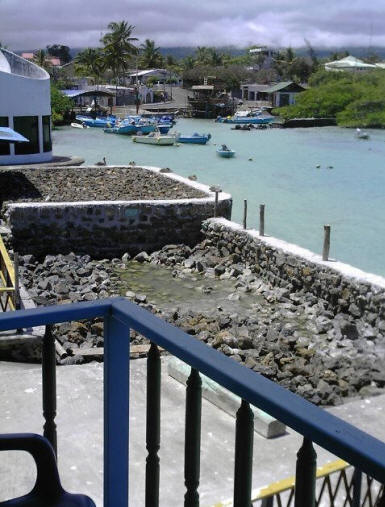
Puerto Ayora Galapagos: View from my room at the Hotel Sol y Mar where I
stayed a few days.

Puerto Ayora Galapagos: View from my room at the Hotel Sol y Mar where I
stayed a few days.

Puerto Ayora Galapagos: View of the bay from my second hotel, the Sol y Mar.
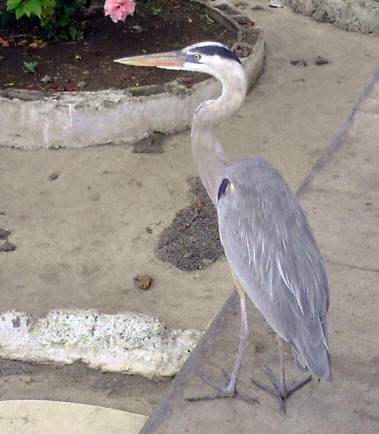
Puerto Ayora Galapagos: "House pet" at the Hotel Sol y Mar where I stayed
two days.
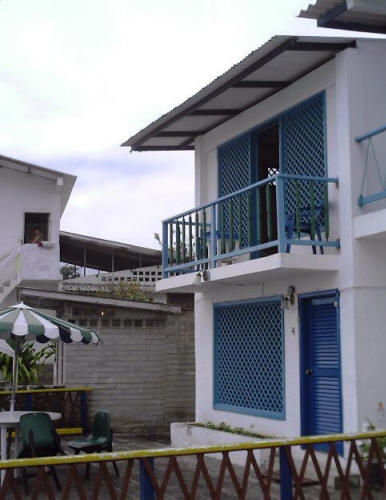
Puerto Ayora Galapagos: My room is the upper left corner and faces the sea
at my second hotel, the Hotel Sol y Mar or Sun and Sea.

Puerto Ayora Galapagos: My second hotel sits on the bay. Hotel Sol y Mar is
a funky place run by the woman in blue who keeps the wild life coming with
daily feedings.
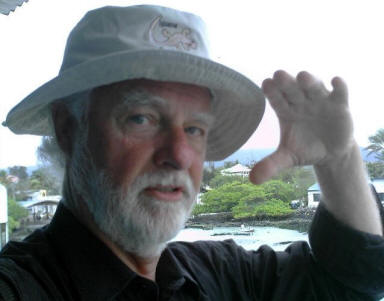
Puerto Ayora Galapagos: After tolerating a painful sunburned face I finally
broke down and bought a hat complete with an embroidery iguana and Galapagos
ID.
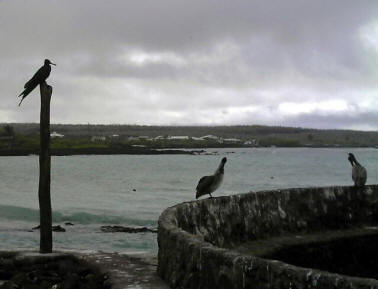
Puerto Ayora Galapagos: A Frigate Bird and a couple Pelicans hang around
waiting for handouts at the Hotel Sol y Mar where I stayed two days.
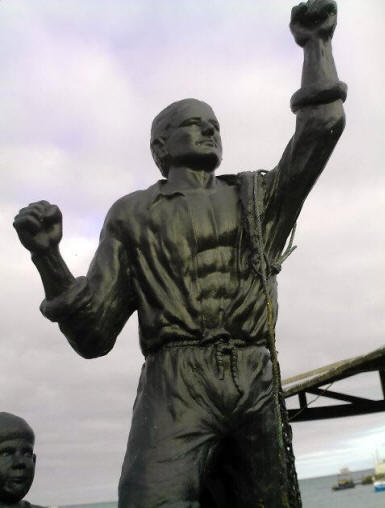
Puerto Ayora Galapagos: Part of a sculpture near the working fisherman's
dock.
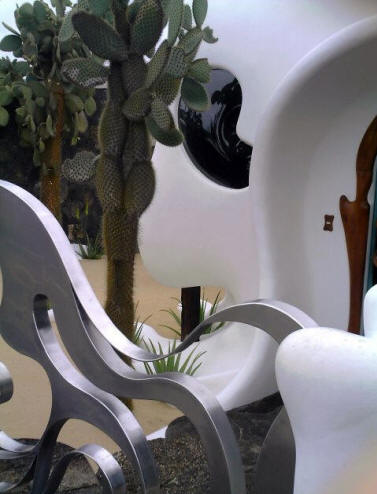
Puerto Ayora Galapagos: Extraordinary design of the building housing a
jewelry store caught my attention.
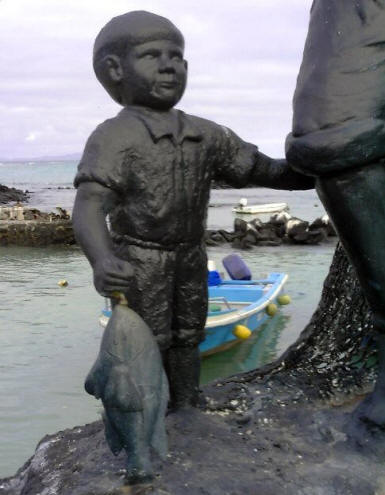
Puerto Ayora Galapagos: Part of a sculpture near the working fisherman's
dock.
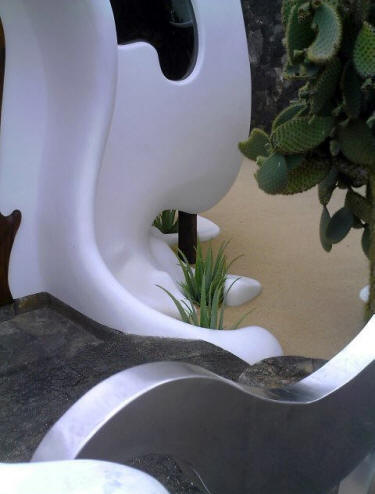
Puerto Ayora Galapagos: Extraordinary design of the building housing a
jewelry store caught my attention.
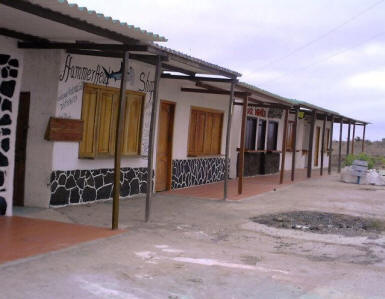
Puerto Ayora Galapagos: Many of the little shops are closed at the airport
on Baltra Island due to the reduced traffic.
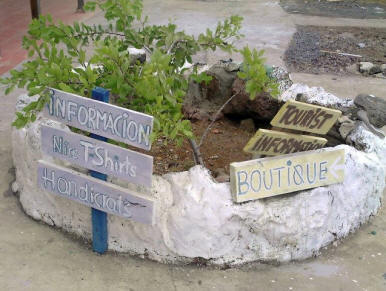
Puerto Ayora Galapagos: Signs for the few tourists still using the facility
around the airport on Baltra Island.
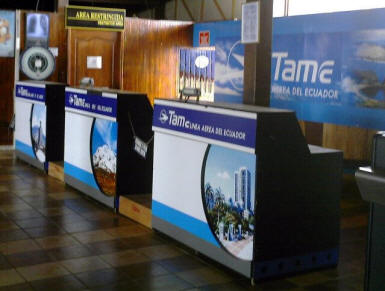
Puerto Ayora Galapagos: Check in counters at the airport on Baltra Island.
Not much traffic these days.
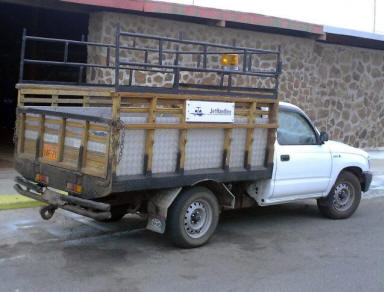
Puerto Ayora Galapagos: Truck-Taxi that got us from the channel to the
airport on Baltra Island.
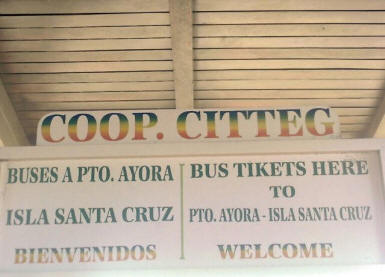
Puerto Ayora Galapagos: Bus transportation information at the airport on
Baltra Island.
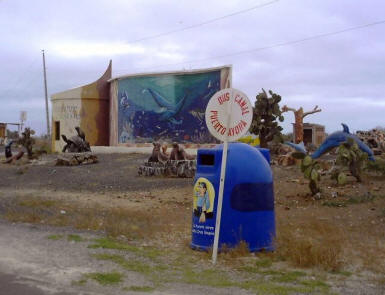
Puerto Ayora Galapagos: Eclectic sculpture garden outside the terminal at
the airport on Baltra Island.
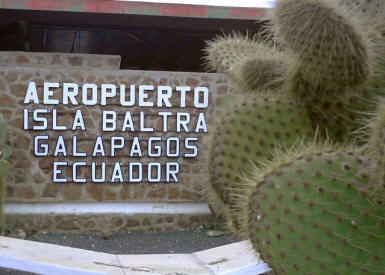
Puerto Ayora Galapagos: Terminal at the airport on Baltra Island.
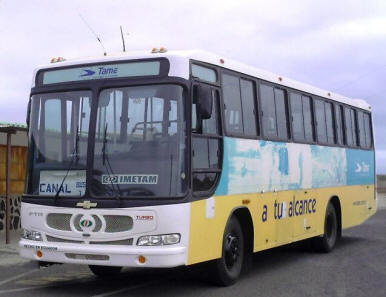
Puerto Ayora Galapagos: Airport bus at the airport on Baltra Island.
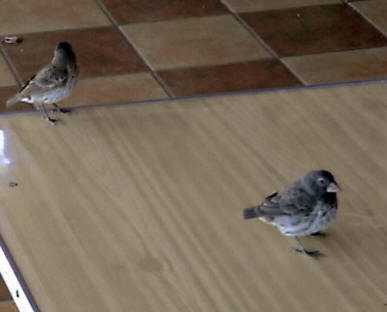
Puerto Ayora Galapagos: One of the flock of fearless Finches around the
airport on Baltra Island.

Puerto Ayora Galapagos: Another of the flocks of fearless Finches around the
airport on Baltra Island.
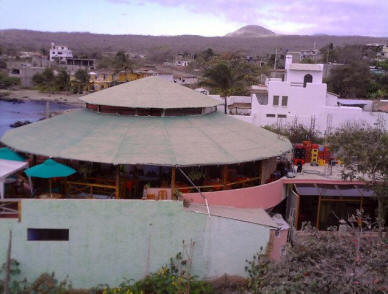
San Cristobal Galapagos: View from the roof of the Hotel Casa Blanca where I
spent one night before continuing on to Guayaquil.
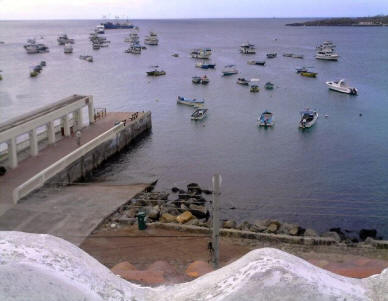
San Cristobal Galapagos: View from the roof of the Hotel Casa Blanca where I
spent one night before continuing on to Guayaquil.
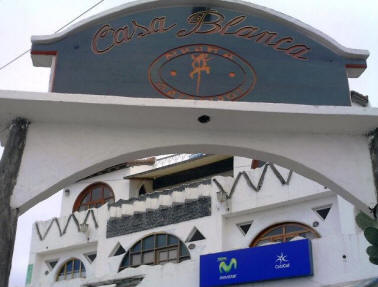
San Cristobal Galapagos: The Hotel Casa Blanca where I spent one night
before continuing on to Guayaquil.
|






































































































































































